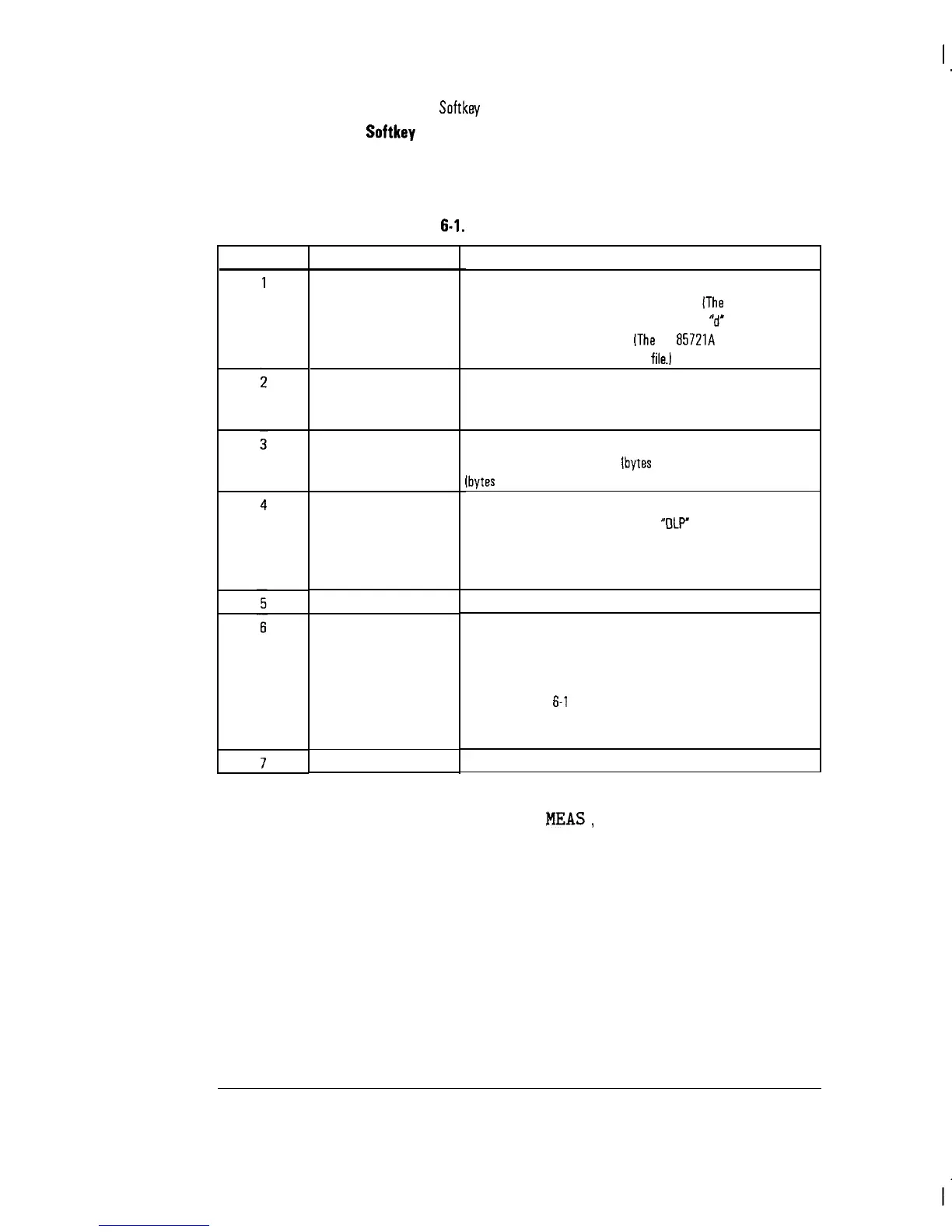I
-
See Also
System Measurements Menu Map and
Softkey
Descriptions
System Measurements
Softkey
Function Descriptions
Table
6-l.
Cataloging a Memory Card
Number
Item
File type
File name
Total number of records
Data type
Starting address
File length
Time of creation
Description
A file type is assigned to every file that is saved on a RAM card.
The “t” indicates the file is a trace data file.
[The
test data and
test plans are stored as trace data files.1 The
“d’
indicates the file
is a downloadable program file.
IThe
HP
85721A
personality is
stored as a downloadable program file.1
Every file on the RAM card has a file name. The file name consists
of the file type, a prefix, and the file number. When you store test
data, the prefix is set to “FILE.”
Displays the total number of records on the memory card. The
number of records times 256 [bytes per record), divided by 1024
[bytes par kilobyte) yields the size of the memory card in kilobytes.
This field describes the file type as follows: “AMP is for the
amplitude correction factor file type,
“OLP”
is for the downloadable
program file type, “LIMIT” is for the limit-line file type, “STATE” is
for the instrument state file type, end ‘TRACE” is for the trace data
file type.
This is the RAM card address for the beginning of the file.
The file length number represents the number of records in the file.
To determine the available space left on a memory card, subtract
the sum of this column from the total number of records. For
example, the sum of the number of records for the 3 files that are
shown in Figure
6-l
is 187. The total number of records for the
memory card is 512, so the available number of records on the
memory card is approximately 325.
The time and date that the file was created.
Press CABLE TV ANALYZER, SYSTEM
MEAS,
More 1 of 2 to access
CATALOG CARD.
“Cataloging a RAM Card" in Chapter 3.
6-8

